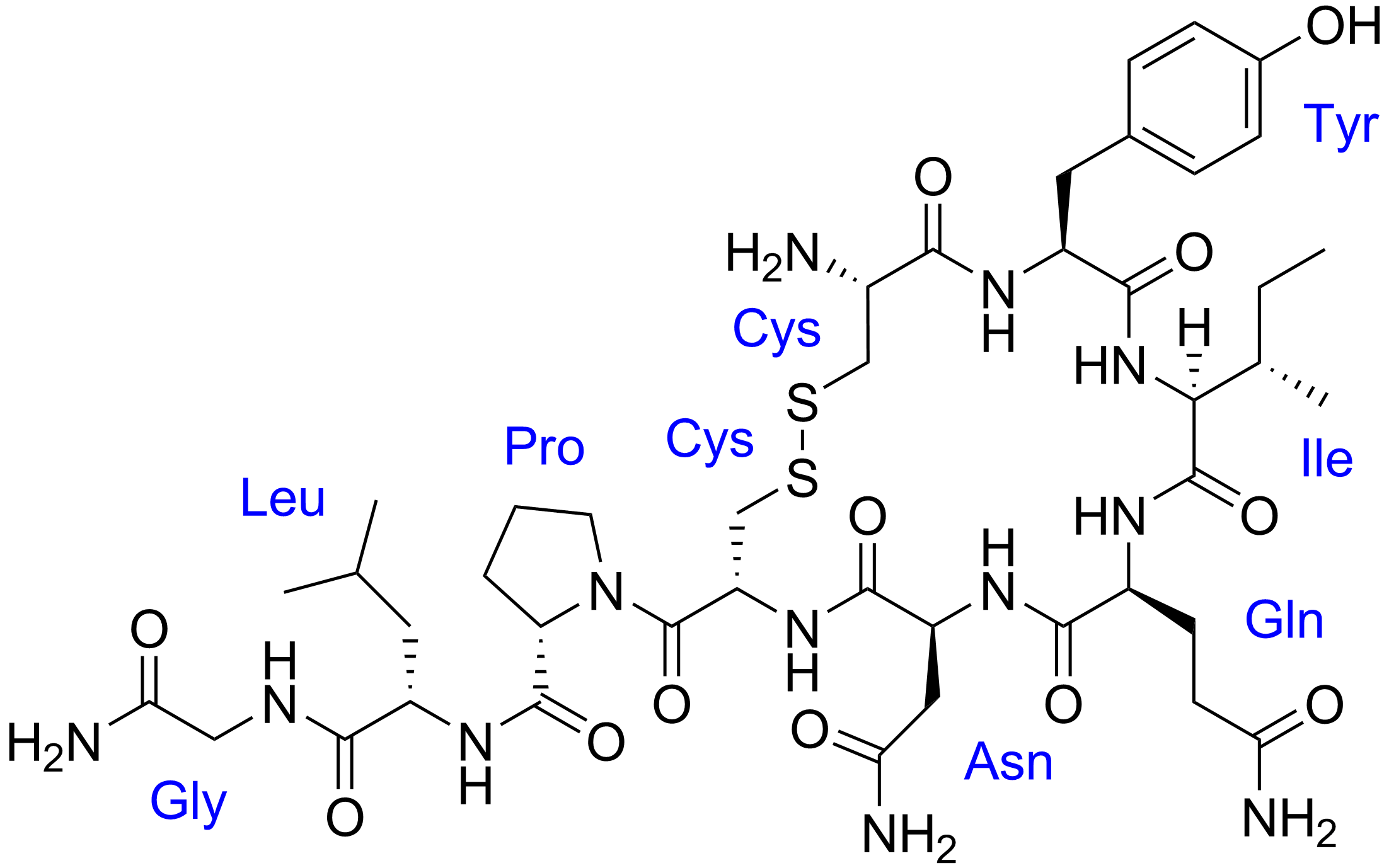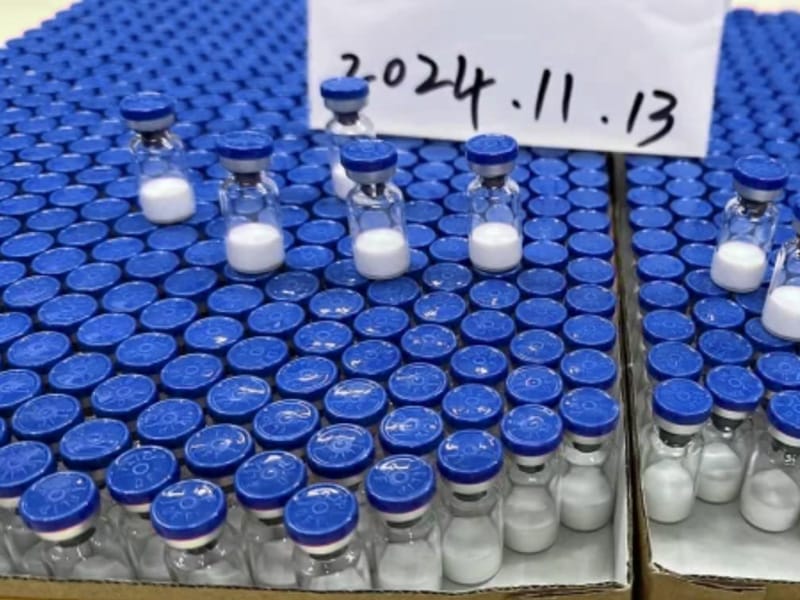Oxytocin powder (OT, 99%) is a type of uterine contraction drug and can be derived from the animal posterior pituitary or chemically synthesized.
Oxytocin is a natural hormone that manages key aspects of the female and male reproductive systems, including labor and delivery and lactation, as well as aspects of human behavior. Your hypothalamus makes oxytocin, but your posterior pituitary gland stores and releases it into your bloodstream. [1] Oxytocin is a uterine contraction drug that is mostly used in late pregnancy induction and stagnant birth due to weak uterine contractions. Suitable for inducing labor and alleviating pain. Commonly used with ergot preparations to be used in inducing labor, expediting labor, and in uterine bleeding due to weak uterine contractions following birth or still birth. Nose drops can be used to promote lactation.

peptide products show combinations
Oxytocin Structure

Oxytocin Peptide Dosage
60 KG (132 lb.) then your ideal daily oral dose would be 96 μg (mcg)
70 KG (154 lb.) => 112 μg
80 KG (176 lb.) => 128 μg
90 KG (198 lb.) => 144 μg
Oxytocin Uses
Oxytocin is used as a peptide hormone that acts predominantly as a neurotransmitter; stimulates uterine contraction and lactation, increases Na+ excretion; stimulates myometrial GTPase and phospholipase C.
Oxytocin is a nonapeptide hormone primarily synthesized in magnocellular neurons of the paraventricular and supraoptic nuclei of the hypothalamus. It is known best for its role in stimulating uterine contraction and lactation and is important for social memory and attachment, sexual and maternal behavior, and aggression. Also, it has been implicated in various non-social behaviors, including learning, anxiety, feeding, and pain perception.
Source:


There are no reviews yet.